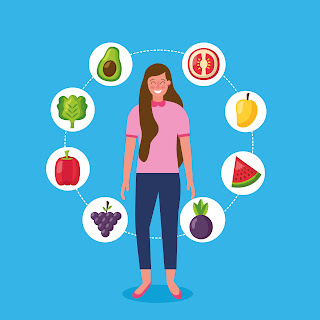Introduction
Hair pigmentation refers to the natural color of hair determined by melanin production. Your radiant-colored hair is more than just a symbol of beauty and health. Hair pigmentation loss, which may lead to premature graying or color changes, can be a factor in nutritional deficiencies. This article explores the nutrients responsible for maintaining vivid hair color, their sources, and the time it takes to restore pigmentation.
Nutrients essential for hair pigmentation:
1. Copper:
- Sources:
Nuts:
Almonds, Cashews and WalnutsSeeds:
Sunflower seeds, Sesame seeds and Pumpkin seedsLegumes:
Lentils, Chickpeas and Black beansWhole Grains:
Quinoa, Oats and Brown rice- Dark Leafy Greens: Spinach, Kale, and Swiss chard
- 2. Vitamin B12:
- Sources:
Fortified Plant-Based Milk:
Almond milk, Soy milk and Oat milkFortified Cereals:
Many breakfast cereals are fortified with vitamin B12.Fortified Nutritional Yeast:
Vitamin B12 can be added to nutritional yeast, often used in vegetarian and vegan dishes.Fortified Plant-based yogurts:
Some plant-based yogurts are fortified with Vitamin B12.Fortified Plant-based cheese:
Some varieties of plant-based cheese may be fortified with Vitamin B12.Eggs:
For lacto-ovo vegetarians, eggs are a source of vitamin B12.- Supplements: Vitamin B12 supplements are widely available for vegetarians and vegans.
- Here are some vegetarian and plant-based sources that may contain small amounts of Vitamin B12 or be fortified with it:
3. Vitamin D:
Vitamin D is primarily found in a limited number of vegetarian sources, and the best way to ensure sufficient intake is through sunlight exposure.
Sources:
- Sunlight: Exposure to sunlight triggers vitamin D synthesis in the skin. Spend time outdoors during peak sunlight hours.
Mushrooms:
Some forms of mushrooms, such as maitake and shiitake, contain small amounts of Vitamin D when exposed to sunlight or UV light during growth.Fortified Plant-Based Milk:
Almond milk, Soy milk and Oat milkFortified Orange Juice:
Certified brands of orange juice are fortified with Vitamin D.Fortified Breakfast Cereals:
Some breakfast cereals are fortified with Vitamin D.Fortified Tofu:
Certain types of tofu may be fortified with vitamin D.Fortified Plant-Based Yogurts:
Some plant-based yogurts are fortified with Vitamin D.Fortified Plant-Based Cheese:
Certain varieties of plant-based cheese may be fortified with Vitamin D.Eggs:
Eggs, especially the yolks, contain few amounts of Vitamin D.Chia Seeds:
Chia seeds provide a small amount of Vitamin D.Fortified Almond Butter:
Some almond butter products are fortified with Vitamin D.Fortified Plant-Based Margarine:
Certified margarine products are fortified with Vitamin D.Seaweed:
Some types of seaweed, like nori, contain small amounts of Vitamin D.Fortified Plant-Based Meat Alternatives:
Some vegetarian meat substitutes may be fortified with Vitamin D.Supplements:
Vitamin D supplements are commonly available for vegetarians and vegans to ensure adequate intake.
It's important to note that while these sources may
contribute to vitamin D intake, sunlight remains a crucial natural source.
Individuals following a vegetarian or vegan diet should monitor their vitamin D
levels and consider supplements if needed, particularly during periods of
limited sunlight exposure.
4. Iron:
Sources:
Legumes:
Lentils, Chickpeas and Black beansWhole Grains:
Quinoa, Brown rice and OatsNuts:
Almonds, CashewsSeeds:
Pumpkin seeds; Sunflower seedsDark leafy greens:
Spinach, KaleDried Fruits:
Raisins, ApricotsTofu:
Firm tofu is a good source of iron.- Fortified Foods: Some cereals and plant-based milk products are fortified with iron.
- Incorporating these iron-rich vegetarian foods into your diet can contribute to meeting your nutritional needs and supporting your overall health. Consuming vitamin C-rich foods alongside iron-rich foods can enhance iron absorption.
5. Amino Acids (Tyrosine and Phenylalanine):
Tyrosine and phenylalanine are amino acids that are important for various functions in the body. Here are 15 vegetarian sources of these amino acids:
Sources of tyrosine:
Dairy Products:
Cheese (especially Swiss and cheddar), Yogurt and MilkMeat Alternatives:
Tempeh, SeitanNuts:
Almonds, WalnutsSeeds:
Pumpkin seeds, Sesame seedsBeans and legumes:
Soybeans, LentilsWhole Grains:
Quinoa, Brown rice
Sources of phenylalanine:
Dairy Products:
Milk, CheeseMeat Alternatives:
Tofu, TempehNuts:
Almonds, PeanutsSeeds:
Sunflower seeds, Chia seedsLegumes:
Lentils, ChickpeasWhole Grains:
Quinoa, Oats
Including a variety of these plant-based sources in your diet can help ensure an adequate intake of both tyrosine and phenylalanine, supporting various physiological processes in the body.
Time Frame for Pigmentation Restoration:
The time needed to restore pigmentation in hair varies from person to person and is influenced by several variables, including age, general health, and the severity of the deficit. Typically, it could take a few months to observe any changes. You can aid in the healing process by adding nutrient-dense foods to your diet regularly and, if needed, correcting deficiencies with supplements.

